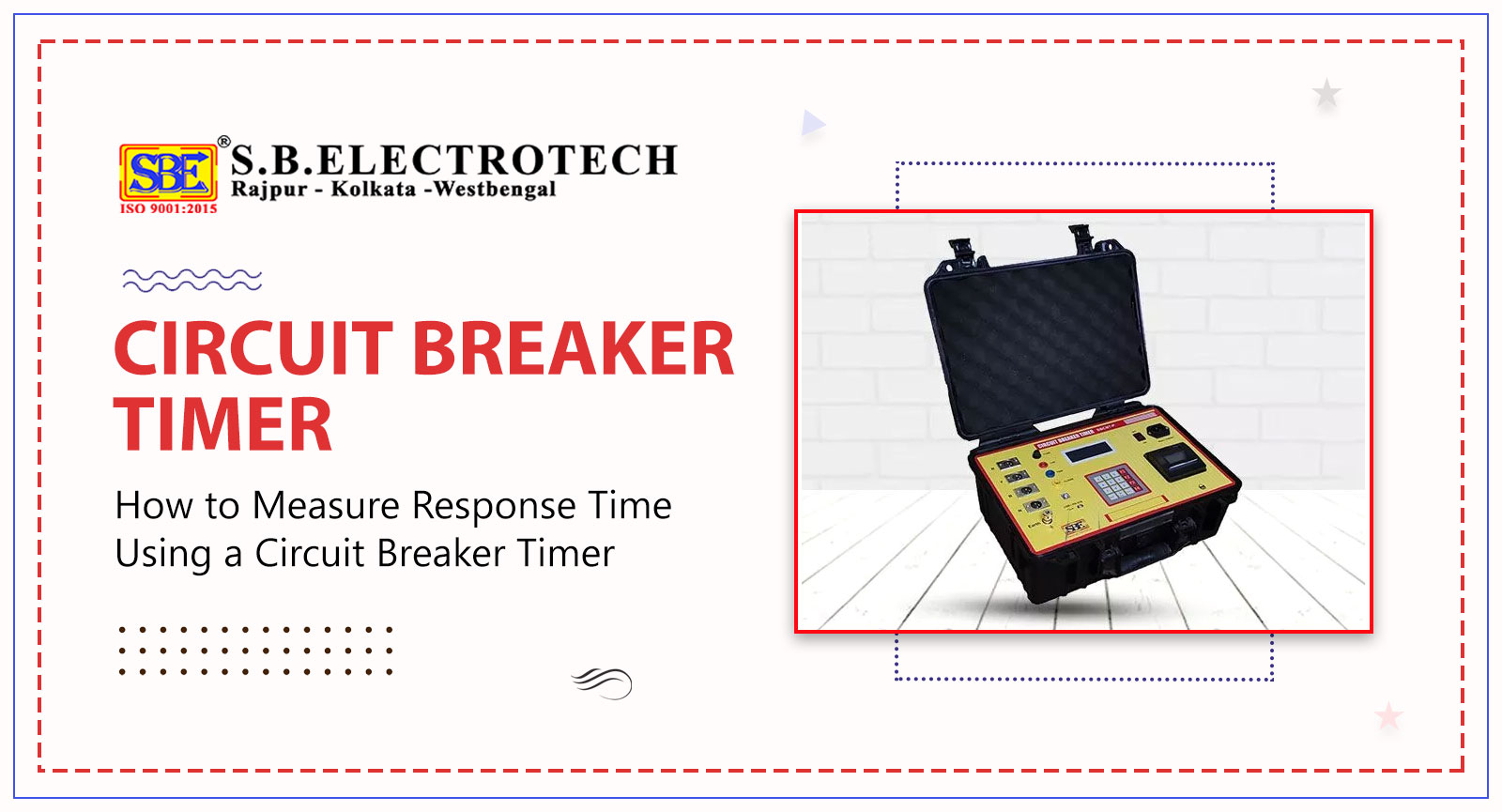In electrical systems, ensuring the reliability and efficiency of high-voltage circuit breakers is paramount. One crucial aspect of their performance evaluation is measuring response time, a key indicator of their ability to swiftly interrupt current flow in case of a fault. In this blog, we’ll explore the essential skill of measuring response time using a circuit breaker timer and explore nine fundamental tests for high-voltage circuit breakers.
Measuring Response Time with a Circuit Breaker Timer
Response time is a critical factor in assessing the performance of a circuit breaker. It refers to the time taken by the breaker to interrupt the current flow after a fault is detected. Using a circuit breaker timer is a precise and systematic approach to measuring this response time. Here are the steps that one should follow:
Understanding Response Time Components
Opening time: It is the duration taken for the circuit breaker to open completely.
Arcing time: It is the time between the initiation of the opening operation and the final arc extinction.
Selecting the Right Circuit Breaker Timer
Choose a timer that suits the voltage class and design of the circuit breaker. Ensure the timer has the necessary precision and resolution for accurate measurements.
Connecting the Timer
Safely connect the timer to the circuit breaker, following the manufacturer’s guidelines. Use proper personal protective equipment to minimize the risk of accidents.
Simulating Fault Conditions
Introduce simulated fault conditions to trigger the circuit breaker. Monitor the response time on the circuit breaker timer.
Recording and Analyzing Date
Record the response time measurements and analyze the data to identify any anomalies or deviations from expected values.
Calibrating the Circuit Breaker
If necessary, calibrate the circuit breaker based on the measured response time. Ensure that the breaker is operating within specified tolerances.
Periodic Testing
Conduct regular response time tests to monitor the circuit breaker’s ongoing performance. Additionally, to retain optimal functionality, address problem areas as soon as possible.
Fundamental Tests for High Voltage Circuit Breakers
In addition to response time measurement, high-voltage circuit breakers require thorough testing to ensure their reliability. Here are nine fundamental tests:
Power Factor Testing: Evaluate the insulation condition by measuring the power factor.
Contact Resistance Measurement: Assess the condition of contacts by measuring the contact resistance.
Insulation Resistance Testing: Check the insulation integrity using insulation resistance tests.
Dielectric Withstand Test: Verify the dielectric strength of the circuit breaker under high voltage conditions.
Overcurrent Relay Testing: Ensure the proper functioning of overcurrent relays to protect the circuit.
Closing and Opening Coil Tests: Test the closing and opening coils for reliability and responsiveness.
Visual Inspection: Perform a visual inspection to identify any visible signs of wear, corrosion, or damage.
Mechanical Operation Tests: Assess the mechanical components for smooth and proper operation.
Partial Discharge Measurement: Detect and measure partial discharges to identify potential insulation issues.
Conclusion
Measuring response time using a circuit breaker timer is a crucial aspect of ensuring the reliable performance of high-voltage circuit breakers. Combining this technique with fundamental tests provides a comprehensive evaluation of a circuit breaker’s health. By mastering these skills, electrical professionals can contribute to the safety and efficiency of electrical systems, reducing the risk of faults and ensuring a robust and resilient power infrastructure.

S.B.ELECTROTECH
S.B. Electrotech is a company that specializes in manufacturing of electrical and electronic testing and measuring instruments. With years of expertise in this field, we ensure to provide high quality, safe, and sustainable products.




